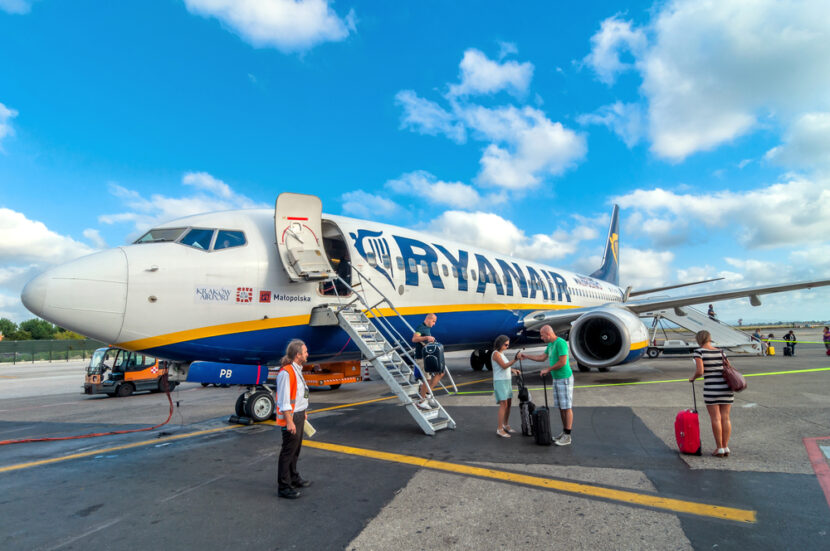DUBLIN – Europe’s leading budget airline Ryanair has beaten forecasts again, reporting full-year net profits of 867 million euros ($949 million), 66 per cent higher than the year before.
The Dublin-based airline said Tuesday it filled 88 per cent of its seats, up 5 points, in the fiscal year ending in March. Sales rose 12 per cent to 5.65 billion euros ($6.2 billion) chiefly because of relentless route expansion combined with the impact of the airline’s 2014 decision to improve customer service, including introduction of a new flexible business-friendly ticket.
Shares in the airline surged 7.5 per cent to 11.70 euros ($12.80) on the Irish Stock Exchange by midafternoon.
Ryanair unveiled a target for the fiscal year 2016 of between 940 million euros and 970 million euros. Many analysts said they expected Ryanair to beat that forecast, potentially breaching the 1 billion euro barrier, given that the airline raised its initial 2015 profit forecast five times – and even its final top target, 850 million euros, fell short of Tuesday’s official result.
Davy Stockbrokers called Ryanair’s forecast “very robust.” The Dublin broker said it now expects Ryanair shares soon will reach 12 euros, a level last attained in February 2007 right before the airline conducted a 2-for-1 share split.
Chief Executive Michael O’Leary said advance bookings are running 4 per cent higher than last year, which should help the carrier fill 90 per cent of its seats in fiscal 2016.
Profits would be even higher were it not for Ryanair’s policy of buying fuel contracts far in advance. That has locked in last year’s much higher oil prices at an average of $92 a barrel through the spring of 2016. The airline says it’s negotiated cheaper contracts averaging $69 a barrel thereafter.
Ryanair carried 90.6 million passengers in the fiscal year 2015, up 11 per cent, and aims to break the 100 million mark this year.
Average fares rose 1 euro to 47 euros, while the total revenue per customer remained flat at 62 euros, reflecting the sales of on-board food, drink and bingo cards as well as commissions on online purchase of hotel rooms and rental cars booked through its website.
The chief financial officer, Neil Sorahan, said Ryanair’s decision to open services at more mainstream European airports and to create a flexible business-class ticket was helping to drive growth, particularly during the typically loss-making winter months. He noted that Tuesday’s full-year results included a fourth-quarter profit of 22.8 million euros, the first January-March gain for the airline since 2007.
O’Leary said a key issue slowing Ryanair’s growth is slow airport development for London. He called for the British government and regulators, which have debated the issue for years, to approve new runways at the capital’s Heathrow, Gatwick and Stansted airports. Ryanair doesn’t use Heathrow, but Stansted is Ryanair’s biggest European hub.
Asked whether Ryanair would connect to Heathrow and Paris’ Charles de Gaulle airports, Sorahan said neither could meet the airline’s key requirement of 25-minute turnarounds from landing to starting a new trip.
“The reality is we probably would circle around for 25 minutes, let alone get in and out of the airport within 25 minutes,” Sorahan said.
Ryanair shares have risen more than 60 per cent in the past year, leading the European airline sector. Founded in 1985 with a single Ireland-England turboprop route, the carrier today uses 320 Boeing 737s to serve 1,600 routes to 30 countries in Europe and North Africa, and has orders for 383 more Boeings.
